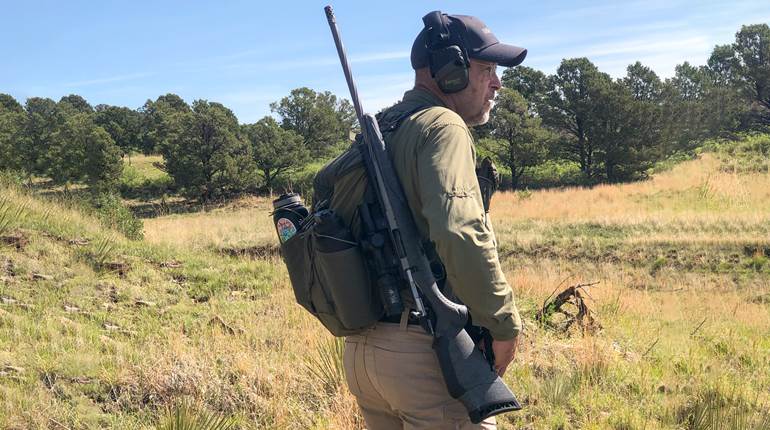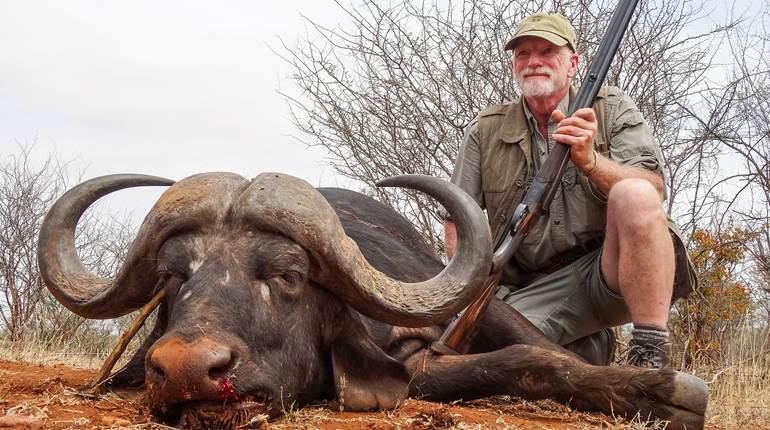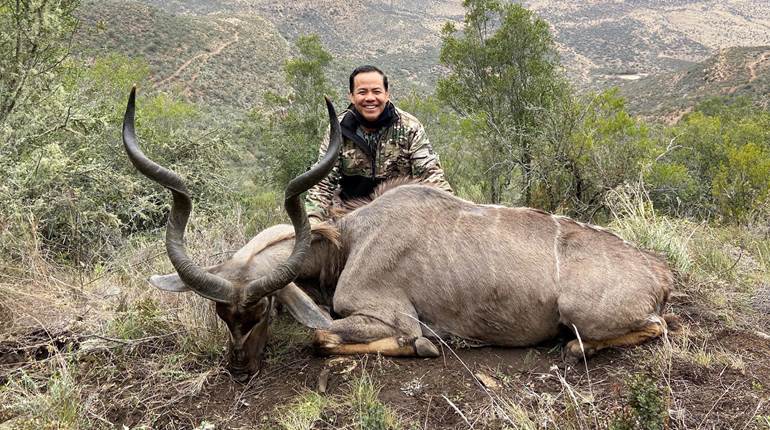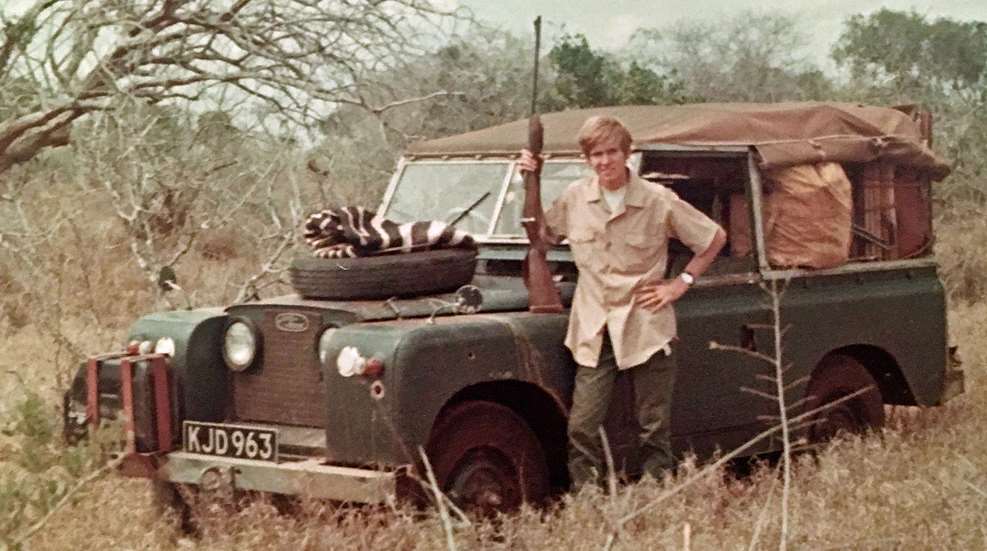
Who says guns don’t have souls? Throughout history, many guns became legendary in the hands of the men who themselves were often living legends. And what tales those guns might tell! Several come to mind, but one truly exceptional rifle belonged to Sir Samuel Baker. It was reported to be one of the largest handheld rifles ever shot—a colossal blackpowder rifle made by Holland & Holland in the mid-1800s, which Baker christened “Baby.”
Baker was a large man, which he needed to be in order to shoulder the 22-lb. rifle and shoot it without the recoil knocking him down. Baby fired a 1/2-lb. projectile and generated recoil so terrific that, on occasion, it spun Sir Samuel around like a “weathercock in a hurricane.” Baker admitted that he hated to shoot Baby, describing one of the memorable times when he did.
“Having spied the elephants, we advanced upon them and commenced hostilities,” he wrote. “Baby roared, and, once again, blood gushed from my nose!” Now that’s a shooting experience.
Rigby built a couple of distinctive rifles around the turn of the 20th century that established stalwart reputations on two continents—in Africa in the hands of W.D.M. (Karamoja) Bell and in India with Col. Jim Corbett. Both rifles were chambered for the inherently accurate 7x57 mm Mauser, and, with laser-like accuracy, Bell’s diminutive Rigby accounted for hundreds of elephants in Uganda’s Karamoja region, while in India, Corbett soundly dispatched numerous man-eating tigers and leopards with his trusty Rigby rifle.

Remington Model 721.
Another notable Rigby rifle belonged to the late Harry Selby, one of Africa’s best-known and most-respected professional hunters (PH). It was a magazine rifle chambered for the .416 Rigby that provided Harry with 50 years of reliable service in the face of danger while backing up safari clients. How Harry acquired this particular Rigby rifle is an interesting tale.
“It was back in 1949 that Donald Ker and I were on safari with three clients in the Ikoma area of northwestern Tanganyika. The safari had gone very well, and the hunting was winding down. My client still had one more buffalo on license, and on the last afternoon, we spotted a lone buffalo bull out in some long grass. My client and I, together with my gun bearers, Kidogo and Matheke, left the hunting car to stalk the buffalo, which we collected without incident.
“There were no nearby trees where the buffalo fell, so we laid our rifles in the grass and began helping Matheke with the removal of the head and cape. My rifle was a first-grade, double .470 Rigby in mint condition, for which I paid about $270. That seems incredible compared to today’s prices.
“As we finished the skinning, I heard a vehicle approaching and assumed it was Kidogo. But it was Donald Ker. As he drove up in his Dodge Power Wagon, it was too late—one of his front wheels had gone right over the barrels of my .470, bending them badly.
“I was devastated, for I was now without a heavy rifle, and had another three-month safari starting soon. Upon arriving back in Nairobi, I looked for a replacement, but time was short, and there was nothing available in the way of a double rifle. The only heavy rifle I could find was a magazine rifle at a local gun dealer. It happened to be a Rigby .416, so with no other option, I bought it. This particular Rigby was unusual in that it was built sometime just after the war on a standard-length Mauser action, but I figured it would just be a stopgap until I could find another double.
“Once back on safari, I soon realized this rifle and cartridge combination was, for me, far superior to my double. The inherent accuracy of a bolt-action was apparent from the very first shot, and the phenomenal penetration made itself evident as time went by. I also appreciated the four-round magazine, and, on several occasions, was glad that those four rounds were ready and waiting. Suffice it to say that, after two safaris, I would not have gone back to a double under any circumstances.”
Legendary Mozambique PH Wally Johnson’s early-production Winchester Model 70 rifle in .375 H&H Mag. was another long-serving rifle with plenty of scars speaking to its colorful history. Wally carried this venerable Winchester, made in 1938, for nearly 50 years, first as a professional ivory hunter and later as a PH for backing up safari clients. He subjected the Winchester to years of hard use, treating it as a “working” rifle—a tool in the finest sense of the word. He carried that Model 70 from before World War II right through to the end of his hunting career in the 1980s. During my years on safari in Botswana, I shared many campfires with both Harry and Wally, and, like them, I also developed a strong affinity for my rifles.
The Model 721 Goes To Africa
My family lived in Kenya back in the 1960s, when a resident’s general game license cost a mere 100 Kenyan shillings—equivalent to U.S. $14—and included 14 species of plains game, with a total of 30 animals that could be hunted annually. The early mainstay of our African battery was an ordinary, iron-sighted Remington Model 721 rifle, chambered in .300 H&H Mag.
My father had originally purchased the rifle back in 1956 at the Navy Exchange on Guam, where he was attached to a Navy photo recon squadron. He bought the rifle for less than $100, with the idea of hunting wild boar in the Philippines and seladang (a wild gaur) in Malaya. Those hunts never materialized, so the Model 721 was relegated to the back of a closet until our family moved to Kenya 10 years later.
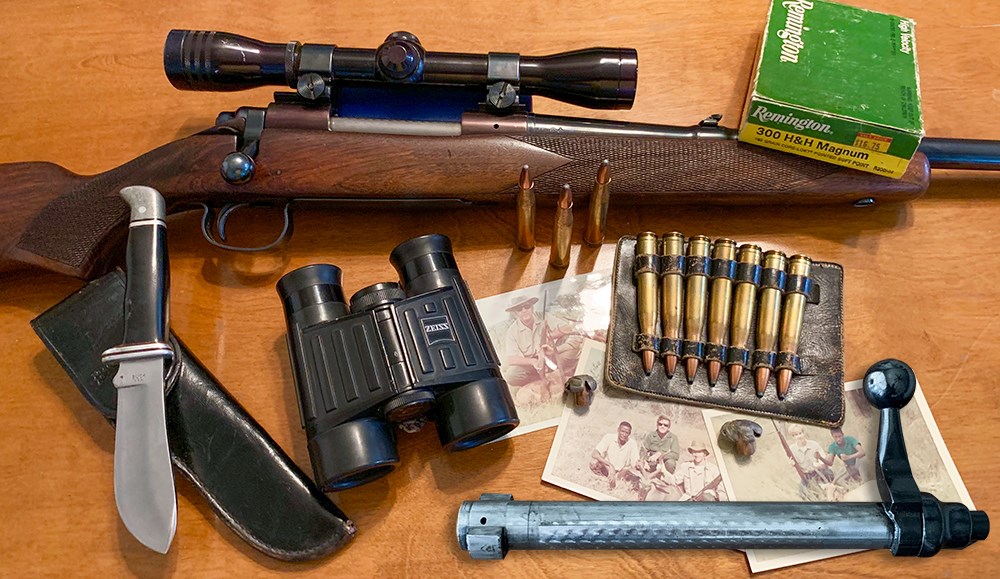
The author’s early hunts in Kenya included a Remington Model 721 rifle chambered in .300 H&H Mag. and Remington Core-Lokt ammunition. The Model 721’s bolt used a small, but effective, extractor mounted within the wall of its recessed face and a plunger-type ejector. The bolt encircled the cartridge head, while the barrel’s chamber surrounded the cartridge, all of which were contained within the receiver—the “three rings of steel” that became a major selling point for the Model 721’s successor, the Model 700.
Remington manufactured the Model 721 from 1948 until 1962, replacing the earlier Model 30 and Model 720. The Model 720, an improved Model 30, was simply a Mauser 98 action that had been designed as the flagship bolt-action rifle for Remington; however, production was halted during World War II. The Model 721 was born after the war out of Remington’s experience building numerous military arms more economically during the war. Manufacturing technology had advanced to a point where Remington had a choice of resuming the more complex production of an expensive rifle or updating the design to modernize production and lower cost. The company opted for a re-design.
The Model 720’s receivers had been machined from a billet of steel, whereas after World War II, the Model 721 incorporated a cost-cutting round profile that could be produced on a lathe rather than a mill. The Remington Model 721’s breech embodied the concept of “three rings of steel” for greater strength and safety—the recessed bolt face encircles the cartridge head, while the barrel’s chamber surrounds the cartridge, all of which are contained within the receiver.
The bolt re-design was made up of several pieces. A small, but effective, extractor was mounted within the wall of the recessed bolt face. A plunger-type ejector, located on the bolt face, replaced the old Mauser-style blade mounted in the receiver. The solid magazine floorplate was not hinged, so loading and unloading the rifle was done strictly from the top of the receiver.
The Model 721 was offered in .264 Win. Mag., .270 Win., .280 Rem., .30-’06 Sprg. and .300 H&H Mag. with all chamberings in the lineup exhibiting excellent accuracy. During 14 years of Model 721 production, a total of 118,000 rifles were made. In 1962, with the Model 721 having served as the basis for its development, the highly successful Model 700 series of rifles was introduced.
On Safari
I bagged my first African game with the Remington Model 721—an impala—followed by a kongoni, Peter’s gazelle, zebra and a warthog. Of all the plains game we hunted, I found the elegant spiral-horned lesser kudu to be the most fascinating from the first moment I saw one bounding through the bush. Collecting my first lesser kudu stands out in my mind as one of my most memorable hunts.
It was on Kisoli Hill in southeastern Kenya where we spotted a magnificent lone lesser kudu one morning. I was immediately gripped by a classic case of buck fever, and managed to whistle two downhill shots over the kudu’s back before gaining enough composure to connect with the third and final round. It was not the rifle’s fault, as I had failed to allow for the sharp downward angle of the shots and had not adjusted my hold to a lower point of aim accordingly.
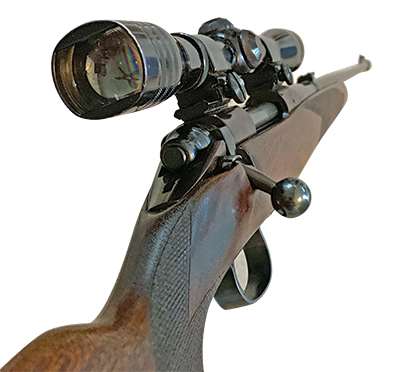
When I swapped the Kenya bush in 1972 for Botswana’s Okavango Delta and Kalahari Desert, the Model 721 came with me. For the demands of safari work, I mounted a Redfield Widefield 4X scope on the rifle, enabling it to easily reach out and tag game at 200 yards or more. Always in the gun rack while on safari, I frequently let my clients use the Model 721 when they needed a reliable plains-game rifle. It added several new species to its list of accomplishments, including even Cape buffalo when I was able to acquire some 200-gr. solid ammunition.
On one memorable occasion, I was hunting in the Kalahari with a Venezuelan client who was using my Model 721. It was midday when we topped a rise to glass a flat stretch of country across a dry pan. I saw a small bump in the distance that I confirmed with binoculars to be a lone springbok. Springbok were few in this particular area and difficult to approach when you did find them. We crept down to the edge of the pan, which was as close as we could expect to get to the springbok.
I suggested that the client have a go with my Model 721, to which he nodded yes and took the rifle, settling into a steady shooting position. He asked me for the distance, and I guessed it to be, at a minimum, more than 300 yards. I advised that he should hold at least a foot or two over the animal’s back and watched him squeeze off the shot. I then turned my attention to the springbok that, to my absolute astonishment, suddenly and silently collapsed in his tracks. After offering the client hearty congratulations, I fetched the vehicle and we drove to the downed animal.
Using the Land Cruiser’s odometer, we measured the distance from where he shot to the springbok to be half-a-kilometer—that’s more than 500 yards. I don’t think anyone was more surprised by the hit than the client himself. Not only had he hit the animal, but the bullet struck the point of the shoulder at the exact place where you would want to hit him. What a rifle!
During her years in Africa, the iron-sighted, plain-vanilla Model 721 rifle provided unfailing reliability and superb service, accounting for many excellent trophies and creating fond memories that I treasure ever more with each passing year. After more than 26 years on safari in Africa, I brought the Model 721 back to the States several years ago in a sort of semi-retirement. This rifle was an integral part of many memorable African hunts, and, in the back of my mind, I thought it might also be fitting to add a whitetail or mule deer to her accomplishments—a goal not yet fulfilled.












